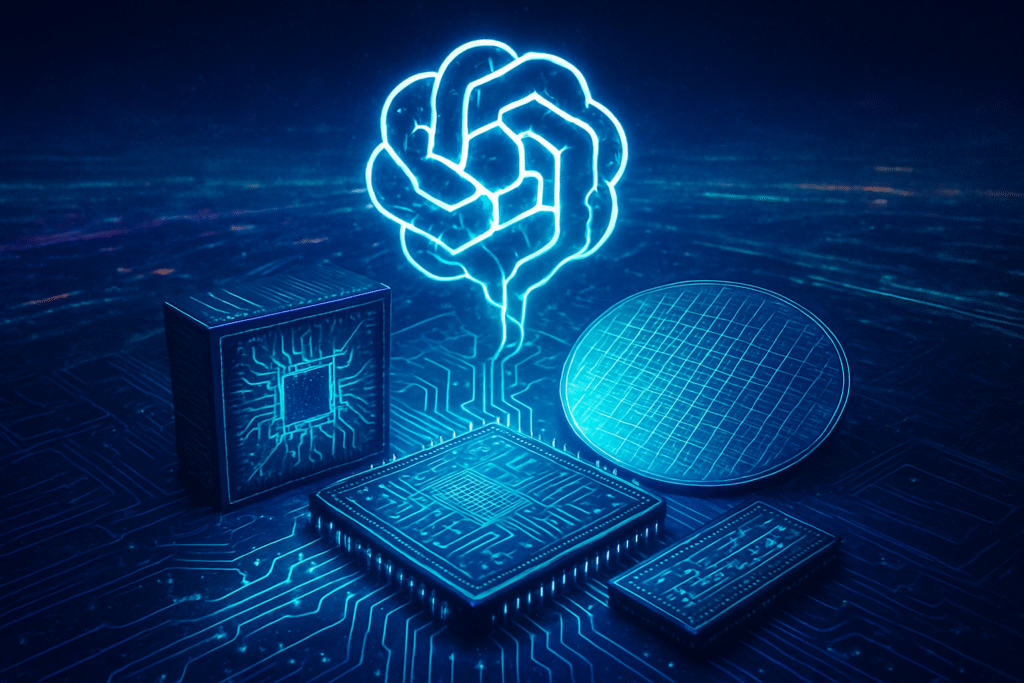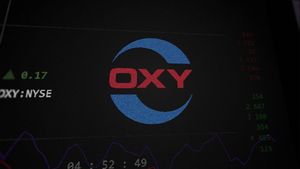
In a monumental development poised to redefine the future of artificial intelligence infrastructure, South Korean semiconductor behemoths Samsung (KRX: 005930) and SK Hynix (KRX: 000660) have formally aligned with OpenAI to supply cutting-edge semiconductor technology for the ambitious "Stargate" project. These strategic partnerships, unveiled on October 1st and 2nd, 2025, during OpenAI CEO Sam Altman's pivotal visit to South Korea, underscore the indispensable role of advanced chip technology in the burgeoning AI era and represent a profound strategic alignment for all entities involved. The collaborations are not merely supply agreements but comprehensive initiatives aimed at building a robust global AI infrastructure, signaling a new epoch of integrated hardware-software synergy in AI development.
The Stargate project, a colossal $500 billion undertaking jointly spearheaded by OpenAI, Oracle (NYSE: ORCL), and SoftBank (TYO: 9984), is designed to establish a worldwide network of hyperscale AI data centers by 2029. Its overarching objective is to develop unprecedentedly sophisticated AI supercomputing and data center systems, specifically engineered to power OpenAI's next-generation AI models, including future iterations of ChatGPT. This unprecedented demand for computational muscle places advanced semiconductors, particularly High-Bandwidth Memory (HBM), at the very core of OpenAI's audacious vision.
Unpacking the Technical Foundation: How Advanced Semiconductors Fuel Stargate
At the heart of OpenAI's Stargate project lies an insatiable and unprecedented demand for advanced semiconductor technology, with High-Bandwidth Memory (HBM) standing out as a critical component. OpenAI's projected memory requirements are staggering, estimated to reach up to 900,000 DRAM wafers per month by 2029. To put this into perspective, this figure represents more than double the current global HBM production capacity and could account for as much as 40% of the total global DRAM output. This immense scale necessitates a fundamental re-evaluation of current semiconductor manufacturing and supply chain strategies.
Samsung Electronics will serve as a strategic memory partner, committing to a stable supply of high-performance and energy-efficient DRAM solutions, with HBM being a primary focus. Samsung's unique position, encompassing capabilities across memory, system semiconductors, and foundry services, allows it to offer end-to-end solutions for the entire AI workflow, from the intensive training phases to efficient inference. The company also brings differentiated expertise in advanced chip packaging and heterogeneous integration, crucial for maximizing the performance and power efficiency of AI accelerators. These technologies are vital for stacking multiple memory layers directly onto or adjacent to processor dies, significantly reducing data transfer bottlenecks and improving overall system throughput.
SK Hynix, a recognized global leader in HBM technology, is set to be a core supplier for the Stargate project. The company has publicly committed to significantly scaling its production capabilities to meet OpenAI's massive demand, a commitment that will require substantial capital expenditure and technological innovation. Beyond the direct supply of HBM, SK Hynix will also engage in strategic discussions regarding GPU supply strategies and the potential co-development of new memory-computing architectures. These architectural innovations are crucial for overcoming the persistent memory wall bottleneck that currently limits the performance of next-generation AI models, by bringing computation closer to memory.
Initial reactions from the AI research community and industry experts have been overwhelmingly positive, albeit with a healthy dose of caution regarding the sheer scale of the undertaking. Dr. Anya Sharma, a leading AI infrastructure analyst, commented, "This partnership is a clear signal that the future of AI is as much about hardware innovation as it is about algorithmic breakthroughs. OpenAI is essentially securing its computational runway for the next decade, and in doing so, is forcing the semiconductor industry to accelerate its roadmap even further." Others have highlighted the engineering challenges involved in scaling HBM production to such unprecedented levels while maintaining yield and quality, suggesting that this will drive significant innovation in manufacturing processes and materials science.
Reshaping the AI Landscape: Competitive Implications and Market Shifts
The strategic alliances between Samsung (KRX: 005930), SK Hynix (KRX: 000660), and OpenAI for the Stargate project are set to profoundly reshape the competitive landscape for AI companies, tech giants, and startups alike. The most immediate beneficiaries are, of course, Samsung and SK Hynix, whose dominant positions in the global HBM market are now solidified with guaranteed, massive demand for years to come. Analysts estimate this incremental HBM demand alone could exceed 100 trillion won (approximately $72 billion) over the next four years, providing significant revenue streams and reinforcing their technological leadership against competitors like Micron Technology (NASDAQ: MU). The immediate market reaction saw shares of both companies surge, adding over $30 billion to their combined market value, reflecting investor confidence in this long-term growth driver.
For OpenAI, this partnership is a game-changer, securing a vital and stable supply chain for the cutting-edge memory chips indispensable for its Stargate initiative. This move is crucial for accelerating the development and deployment of OpenAI's advanced AI models, reducing its reliance on a single supplier for critical components, and potentially mitigating future supply chain disruptions. By locking in access to high-performance memory, OpenAI gains a significant strategic advantage over other AI labs and tech companies that may struggle to secure similar volumes of advanced semiconductors. This could widen the performance gap between OpenAI's models and those of its rivals, setting a new benchmark for AI capabilities.
The competitive implications for major AI labs and tech companies are substantial. Companies like Google (NASDAQ: GOOGL), Meta (NASDAQ: META), and Microsoft (NASDAQ: MSFT), which are also heavily investing in their own AI hardware infrastructure, will now face intensified competition for advanced memory resources. While these tech giants have their own semiconductor design efforts, their reliance on external manufacturers for HBM will likely lead to increased pressure on supply and potentially higher costs. Startups in the AI space, particularly those focused on large-scale model training, might find it even more challenging to access the necessary hardware, potentially creating a "haves and have-nots" scenario in AI development.
Beyond memory, the collaboration extends to broader infrastructure. Samsung SDS will collaborate on the design, development, and operation of Stargate AI data centers. Furthermore, Samsung C&T and Samsung Heavy Industries will explore innovative solutions like jointly developing floating data centers, which offer advantages in terms of land scarcity, cooling efficiency, and reduced carbon emissions. These integrated approaches signify a potential disruption to traditional data center construction and operation models. SK Telecom (KRX: 017670) will partner with OpenAI to establish a dedicated AI data center in South Korea, dubbed "Stargate Korea," positioning it as an AI innovation hub for Asia. This comprehensive ecosystem approach, from chip to data center to model deployment, sets a new precedent for strategic partnerships in the AI industry, potentially forcing other players to forge similar deep alliances to remain competitive.
Broader Significance: A New Era for AI Infrastructure
The Stargate initiative, fueled by the strategic partnerships with Samsung (KRX: 005930) and SK Hynix (KRX: 000660), marks a pivotal moment in the broader AI landscape, signaling a shift towards an era dominated by hyper-scaled, purpose-built AI infrastructure. This development fits squarely within the accelerating trend of "AI factories," where massive computational resources are aggregated to train and deploy increasingly complex and capable AI models. The sheer scale of Stargate's projected memory demand—up to 40% of global DRAM output by 2029—underscores that the bottleneck for future AI progress is no longer solely algorithmic innovation, but critically, the physical infrastructure capable of supporting it.
The impacts of this collaboration are far-reaching. Economically, it solidifies South Korea's position as an indispensable global hub for advanced semiconductor manufacturing, attracting further investment and talent. For OpenAI, securing such a robust supply chain mitigates the significant risks associated with hardware scarcity, which has plagued many AI developers. This move allows OpenAI to accelerate its research and development timelines, potentially bringing more advanced AI capabilities to market sooner. Environmentally, the exploration of innovative solutions like floating data centers by Samsung Heavy Industries, aimed at improving cooling efficiency and reducing carbon emissions, highlights a growing awareness of the massive energy footprint of AI and a proactive approach to sustainable infrastructure.
Potential concerns, however, are also significant. The concentration of such immense computational power in the hands of a few entities raises questions about AI governance, accessibility, and potential misuse. The "AI compute divide" could widen, making it harder for smaller research labs or startups to compete with the resources of tech giants. Furthermore, the immense capital expenditure required for Stargate—$500 billion—illustrates the escalating cost of cutting-edge AI, potentially creating higher barriers to entry for new players. The reliance on a few key semiconductor suppliers, while strategic for OpenAI, also introduces a single point of failure risk if geopolitical tensions or unforeseen manufacturing disruptions were to occur.
Comparing this to previous AI milestones, Stargate represents a quantum leap in infrastructural commitment. While the development of large language models like GPT-3 and GPT-4 were algorithmic breakthroughs, Stargate is an infrastructural breakthrough, akin to the early internet's build-out of fiber optic cables and data centers. It signifies a maturation of the AI industry, where the foundational layer of computing is being meticulously engineered to support the next generation of intelligent systems. Previous milestones focused on model architectures; this one focuses on the very bedrock upon which those architectures will run, setting a new precedent for integrated hardware-software strategy in AI development.
The Horizon of AI: Future Developments and Expert Predictions
Looking ahead, the Stargate initiative, bolstered by the Samsung (KRX: 005930) and SK Hynix (KRX: 000660) partnerships, heralds a new era of expected near-term and long-term developments in AI. In the near term, we anticipate an accelerated pace of innovation in HBM technology, driven directly by OpenAI's unprecedented demand. This will likely lead to higher densities, faster bandwidths, and improved power efficiency in subsequent HBM generations. We can also expect to see a rapid expansion of manufacturing capabilities from both Samsung and SK Hynix, with significant capital investments in new fabrication plants and advanced packaging facilities over the next 2-3 years to meet the Stargate project's aggressive timelines.
Longer-term, the collaboration is poised to foster the development of entirely new AI-specific hardware architectures. The discussions between SK Hynix and OpenAI regarding the co-development of new memory-computing architectures point towards a future where processing and memory are much more tightly integrated, potentially leading to novel chip designs that dramatically reduce the "memory wall" bottleneck. This could involve advanced 3D stacking technologies, in-memory computing, or even neuromorphic computing approaches that mimic the brain's structure. Such innovations would be critical for efficiently handling the massive datasets and complex models envisioned for future AI systems, potentially unlocking capabilities currently beyond reach.
The potential applications and use cases on the horizon are vast and transformative. With the computational power of Stargate, OpenAI could develop truly multimodal AI models that seamlessly integrate and reason across text, image, audio, and video with human-like fluency. This could lead to hyper-personalized AI assistants, advanced scientific discovery tools capable of simulating complex phenomena, and even fully autonomous AI systems capable of managing intricate industrial processes or smart cities. The sheer scale of Stargate suggests a future where AI is not just a tool, but a pervasive, foundational layer of global infrastructure.
However, significant challenges need to be addressed. Scaling production of cutting-edge semiconductors to the levels required by Stargate without compromising quality or increasing costs will be an immense engineering and logistical feat. Energy consumption will remain a critical concern, necessitating continuous innovation in power-efficient hardware and cooling solutions, including the exploration of novel concepts like floating data centers. Furthermore, the ethical implications of deploying such powerful AI systems at a global scale will demand robust governance frameworks, transparency, and accountability. Experts predict that the success of Stargate will not only depend on technological prowess but also on effective international collaboration and responsible AI development practices. The coming years will be a test of humanity's ability to build and manage AI infrastructure of unprecedented scale and power.
A New Dawn for AI: The Stargate Legacy and Beyond
The strategic partnerships between Samsung (KRX: 005930), SK Hynix (KRX: 000660), and OpenAI for the Stargate project represent far more than a simple supply agreement; they signify a fundamental re-architecture of the global AI ecosystem. The key takeaway is the undeniable shift towards a future where the scale and sophistication of AI models are directly tethered to the availability and advancement of hyper-scaled, dedicated AI infrastructure. This is not merely about faster chips, but about a holistic integration of hardware manufacturing, data center design, and AI model development on an unprecedented scale.
This development's significance in AI history cannot be overstated. It marks a clear inflection point where the industry moves beyond incremental improvements in general-purpose computing to a concerted effort in building purpose-built, exascale AI supercomputers. It underscores the maturity of AI as a field, demanding foundational investments akin to the early days of the internet or the space race. By securing the computational backbone for its future AI endeavors, OpenAI is not just building a product; it's building the very foundation upon which the next generation of AI will stand. This move solidifies South Korea's role as a critical enabler of global AI, leveraging its semiconductor prowess to drive innovation worldwide.
Looking at the long-term impact, Stargate is poised to accelerate the timeline for achieving advanced artificial general intelligence (AGI) by providing the necessary computational horsepower. It will likely spur a new wave of innovation in materials science, chip design, and energy efficiency, as the demands of these massive AI factories push the boundaries of current technology. The integrated approach, involving not just chip supply but also data center design and operation, points towards a future where AI infrastructure is designed from the ground up to be energy-efficient, scalable, and resilient.
What to watch for in the coming weeks and months includes further details on the specific technological roadmaps from Samsung and SK Hynix, particularly regarding their HBM production ramp-up and any new architectural innovations. We should also anticipate announcements regarding the locations and construction timelines for the initial Stargate data centers, as well as potential new partners joining the initiative. The market will closely monitor the competitive responses from other major tech companies and AI labs, as they strategize to secure their own computational resources in this rapidly evolving landscape. The Stargate project is not just a news story; it's a blueprint for the future of AI, and its unfolding will shape the technological narrative for decades to come.
This content is intended for informational purposes only and represents analysis of current AI developments.
TokenRing AI delivers enterprise-grade solutions for multi-agent AI workflow orchestration, AI-powered development tools, and seamless remote collaboration platforms.
For more information, visit https://www.tokenring.ai/.





